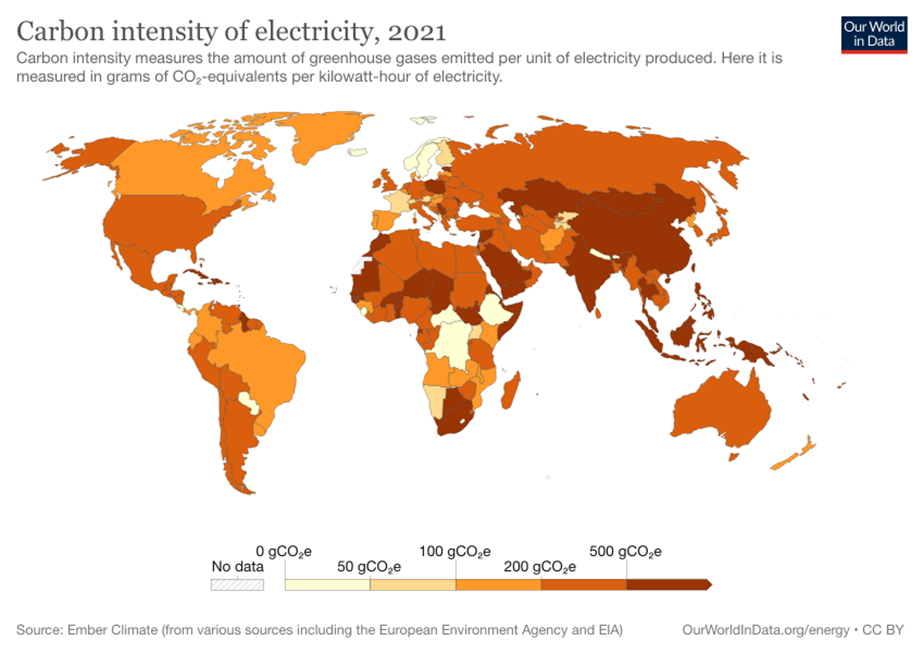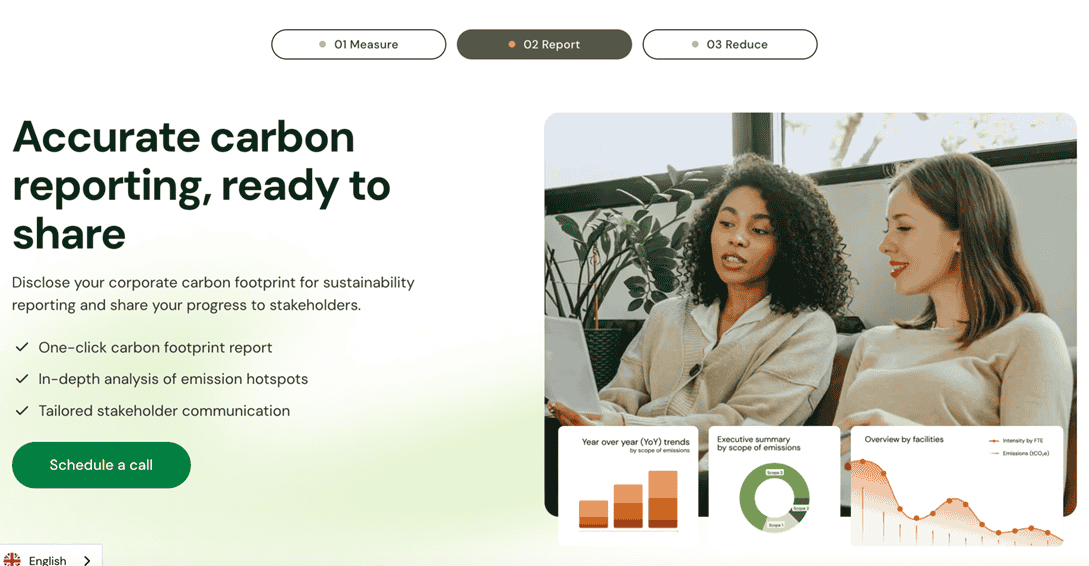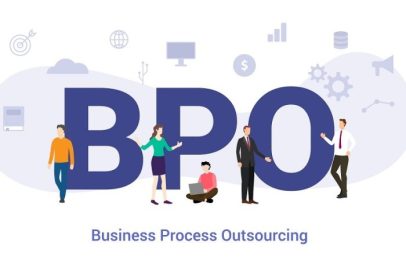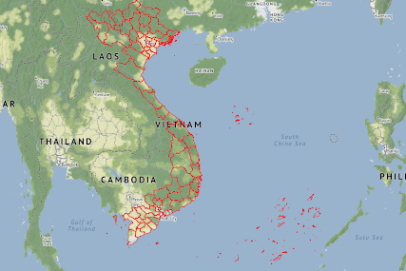New trends in carbon accounting software in 2025
In the context of increasing pressure on emission transparency and compliance with international greenhouse gas reporting standards such as CSRD (EU), SEC (US) or TCFD (Japan), greenhouse gas inventory is no longer a voluntary option but has become a prerequisite for businesses to integrate into the global supply chain. A complete, accurate and continuous greenhouse gas inventory not only helps businesses identify emission risks but is also an important stepping stone to build a roadmap to reduce emissions, improve ESG reputation and access to green capital.
However, in the face of increasingly stringent requirements for accuracy, speed and ability to integrate data, traditional inventory methods – based on Excel spreadsheets or manual processes – are revealing many limitations. Especially for Vietnamese businesses, the challenge does not only come from the shortage of specialized human resources or distributed data, but also from the problem of choosing a software solution that both meets the requirements of inventory according to international standards and is suitable for the scale of operation and internal technological capacity.
So, what technology trends will shape the future of carbon accounting software in 2025 and beyond?
This article will first review the outstanding challenges in greenhouse gas inventory, thereby clarifying the essential role of inventory software in improving the accuracy, efficiency and transparency of the emission measurement process. At the same time, the article also helps businesses update the latest technology trends that are reshaping the market greenhouse gas software from AI, Open API to comprehensive automation and suggest the right direction to optimize the green transition, improve competitiveness and keep pace with the global sustainable development trend.
1. New challenges in greenhouse gas inventory
Before discussing technology trends, it is important to recognize that the current greenhouse gas inventory is entering a new stage, where the requirements for data accuracy, speed and transparency are becoming increasingly demanding. Not only do businesses face pressure from international standards, but they also have to deal with huge, complex, and scattered amounts of emissions data. In that context, if businesses do not quickly adapt and innovate inventory methods, they will easily fall behind in the green transformation journey and lose their advantage in the global market.
- Lack of detailed and timely data
One of the biggest challenges today in greenhouse gas inventories is the lack of detailed and timely data. Data is the foundation for measuring and evaluating emissions, however, the reality shows that businesses today still rely mainly on data collected from accounting departments, while other departments such as operations, procurement or logistics do not have an effective information sharing mechanism. The lack of a synchronous system between departments results in fragmented, incomplete, and inconsistent data. In addition, there is currently no common set of standards for the process of collecting and sharing emission data, making it difficult for each business to deploy in its own way, making it difficult to ensure comparability and transparency. As a result, emission sources may be omitted or incorrectly calculated, especially indirect emissions in the supply chain (Scope 3) – which account for a huge proportion of total emissions of enterprises. This not only affects the quality of the report but also reduces the effectiveness of developing a long-term emission reduction strategy
Greenhouse gas emissions in three ranges (Scope 1, 2 and 3)
- Complexity in Defining System Boundaries
Another prominent challenge in today’s greenhouse gas inventory is the complexity of defining system boundaries. In the context of increasingly complex and closely linked global supply chains, it is becoming more difficult than ever to clearly identify which sources of emissions fall under the scope of inventory. Direct emissions (Scope 1) and indirect emissions from energy consumption (Scope 2) are relatively easy to identify, but for indirect emissions in the value chain (Scope 3), the boundaries become blurred as resource reuse, carbon cycling, and interdisciplinary partnerships become more common. Accurately determining the scope of the inventory requires a comprehensive assessment of not only internal operations but also the impact of emissions throughout the entire product life cycle – from raw materials, production, transportation to consumption and post-life treatment. If system boundaries are not clearly defined, businesses risk missing out on critical emissions sources or duplicate calculations, leading to inaccurate inventory results and degrading the effectiveness of emission reduction strategies. This practice requires a uniform methodology and more detailed guidelines on establishing system boundaries in current greenhouse gas inventory standards.
- Lack of global standardization in greenhouse gas inventories
In addition to internal difficulties, greenhouse gas inventories today also face a global challenge: lack of standardization in inventory methods and systems. Although many international standards such as GHG Protocol and ISO 14064 have been issued, in fact, countries and regions still apply different calculation methods, emission factors and inventory regulations. This creates fragmentation in how greenhouse gas emissions are measured and reported globally. The lack of a “common coin” for carbon – similar to a globally standardized accounting system – makes emissions figures difficult to compare and lack interchangeability. As a result, cross-border carbon credit trading, which plays a key role in promoting climate finance and developing international carbon markets, has become complex and inefficient. This difference also makes it difficult for businesses to participate in the global supply chain, because the same product can be evaluated differently depending on the regulations of each market. While a fully uniform standard framework is unlikely to be feasible in the short term, moving towards the development of compatible mechanisms and inter-regional exchange systems will be key to increasing transparency and efficiency in global greenhouse gas emissions inventory and governance.
2. Carbon accounting Software: The Key to Solving Challenges in Emissions Inventory
Facing increasing challenges in greenhouse gas inventory, carbon accounting software is gradually becoming an indispensable tool, helping businesses overcome inherent limitations in the process of measuring and reporting emissions. One of the biggest advantages of the software is that it improves the accuracy and efficiency of the emission measurement process. Instead of relying on error-prone manual spreadsheets, the software automatically collects, aggregates, and standardizes data from various sources such as ERP systems, financial software, or IoT sensors. This not only helps businesses save significant time but also ensures that emission figures are calculated based on international methodologies such as GHG Protocol or ISO 14064. Enhancing the accuracy and integrity of emissions data is an important foundation for businesses to build reliable ESG reports and achieve long-term emission reduction goals.
In the context of increasingly tightening regulations on emissions and sustainability reporting, carbon accounting software makes it easy for businesses to comply with legal standards and regulations such as SECR, CSRD or CBAM. Automated reporting tools built into the software allow businesses to quickly create standardized reports, meeting the requirements of regulators, partners, and investors. Transparency in the report not only helps businesses avoid legal risks but also strengthens brand reputation, affirms a substantial commitment to sustainable development and minimizes the risk of being accused of “greenwashing”.
Not only stopping at the role of supporting inventory, greenhouse gas software also helps businesses build and monitor the Net Zero roadmap in a methodical way. Through built-in data analysis tools, businesses can assess emission trends over time, simulate emission reduction scenarios, and identify priority areas for action. Some software also supports the integration of financial factors into emissions analysis, allowing businesses to consider cost and efficiency in each emission reduction decision. As a result, the Net Zero goals are no longer general commitments but are concretized into clear and measurable action strategies, contributing to improving competitiveness in the global sustainable business trend.
With an increasingly expanding role from inventory to strategic planning, greenhouse gas software has become an effective arm to help businesses not only meet compliance requirements but also proactively lead the green transformation journey. However, to take full advantage of this potential, businesses need to grasp and apply the latest technology trends that are reshaping the entire way emissions are measured and managed.
3. Trends in greenhouse gas inventory
Trend 1: Application of Artificial Intelligence (AI) in greenhouse gas inventory
In the context of increasingly stringent requirements for emissions inventory and reporting, artificial intelligence (AI) is gradually becoming a revolutionary factor in carbon accounting software. One of the foundational technologies that is strongly applied is Machine Learning (ML). This technology allows the software to automatically analyze large data sets to identify emission patterns and detect anomalies that traditional methods can easily miss. ML also supports automatic calculation of emission coefficients based on historical data, thereby improving the accuracy of greenhouse gas reporting. Not only inventory, ML also allows businesses to model emission reduction scenarios, helping them evaluate the effectiveness of sustainability strategies in advance and make decisions based on actual data rather than emotions
For example, Persefoni has applied ML to automatically map operational data into emission factors, and detect errors in the data collection and synthesis process. In addition, Persefoni also analyzes emission trends over time and simulates Net Zero scenarios, helping businesses build emission reduction roadmaps based on historical data.
Not out of this trend, VertZéro, a carbon accounting software developed by FPT IS, has also integrated the ability to automatically map operational data with standardized emission coefficients according to the GHG Protocol method and other international standards. This capability helps VertZéro optimize data processing speed, ensure high accuracy, and support businesses to build transparent emissions reports, while creating a solid data foundation for long-term emission reduction planning.
Standout feature – VertZéro software’s automatic splicing of scope 3 emission data
Trend 2: Open API – Multi – system integration
In modern carbon accounting software, open integration (Open API) is increasingly becoming an essential factor to optimize operational efficiency. Open API allows the software to flexibly connect with enterprise management systems such as ERP, CRM, and IoT sensor devices, facilitating the automatic collection of data from various sources such as electricity consumption, fuel use, and logistics operations, rather than relying on the traditional manual data entry process. As a result, the data is updated in real-time, and the accuracy and consistency of greenhouse gas emission reports are improved.
Practice shows that the lack of integration capabilities is one of the major barriers to ESG data governance. According to a report by Forrester Consulting (2022) commissioned by Dun & Bradstreet , up to 46% of businesses reflect that current ESG data is fragmented, inconsistent, and does not ensure quality. In fact, 47% of businesses said they had ignored or not used ESG data for decision-making due to a lack of proper analytical tools. This shows that a well-integrated carbon accounting system, with the ability to synchronize multi-source data via Open API, will play a key role in helping businesses not only significantly shorten the time it takes to collect and process data, but also enhance the transparency and reliability of emissions reports – an increasingly urgent requirement in the context of increasingly stringent ESG standards and investor expectations
Trend 3: Automating the entire inventory process
Another prominent trend in modern carbon accouting software is the automation of the entire inventory process. Instead of relying on manual steps, the software now allows businesses to perform “one-click carbon reporting” – with just one simple operation, businesses can create greenhouse gas (GHG) emission reports that meet international standards such as GRI and CSRD. In addition, Workflow Automation allows for the establishment of periodic inventory processes, automatically collecting, processing, and updating data, ensuring continuity and accuracy without manual intervention.
Not stopping there, the software also integrates the Data Visualization feature, with an intuitive emission KPI dashboard system, helping businesses instantly track emission progress, compare with set goals and quickly identify areas that need to be prioritized for action. All of these features contribute to significant savings in human resources, minimized data processing time, and reduced costs of complying with increasingly stringent regulations on emissions reporting. More importantly, automating the process also helps businesses improve the transparency and accuracy of reporting, building trust with investors, partners and stakeholders in the journey towards sustainable development.
One-Click report feature of Plan A software
4. Conclusion
It can be seen that carbon accounting software is becoming more and more intelligent and fully automated. The combination of AI, Open API and Automation is the key to helping businesses shorten the process of measuring and reporting emissions and accelerate the journey to realize the Net Zero goal. In the context of increasingly stringent requirements for emission transparency and ESG standards, businesses that pioneer the early adoption and application of this technology will certainly possess an outstanding sustainable competitive advantage in the market.
Not out of that trend, FPT IS‘s VertZéro carbon accounting software has quickly integrated the most advanced technologies. VertZéro supports open API connections, allowing automatic data synchronization from ERP, CRM, and IoT systems; and provides a “one-click carbon reporting” feature, helping businesses easily create international standard emission reports such as GRI and CSRD in just one operation. As a result, VertZéro not only helps save human resources and reduce compliance costs, but also contributes to improving transparency and reliability in ESG reporting, supporting Vietnamese businesses to be more stable on the journey of green transformation and sustainable development.
References
- Gupta, D., & MacLean, K. (2024). Carbon Accounting: Priorities, Challenges and Strategic Developments [Policy Brief]. Industrial Decarbonisation Research and Innovation Centre (IDRIC).
https://idric.org/wp-content/uploads/Carbon-Accounting-Brief.pdf - Idowu, M., & Ok, E. (2025). Harnessing AI for Carbon Accounting: Revolutionizing ESG Reporting and Sustainability. Ladoke Akintola University of Technology.
[Local PDF Access] (Chưa có link public, cần upload bản chính nếu muốn dẫn online.) - Forrester Consulting. (2022). Prioritizing ESG Is Not Optional Anymore: How Successful Companies Leverage Dedicated ESG Capabilities To Transform Their Business [White Paper]. Commissioned by Dun & Bradstreet.
https://altares87872.activehosted.com/content/pyND2/2023/11/08/467a8171-b498-44ed-b999-f7e0c1c94bd3.pdf - Persefoni
Persefoni AI Inc. Climate Management & Carbon Accounting Platform. Available at: https://www.persefoni.com - Watershed
The enterprise sustainability platform. Available at: https://watershed.com/fr
| Exclusive article by FPT expert
Mr Tuan Pham – Product Owner of VertZero, MBA in Climate Change. Specializing in GHG Inventory, LCA, and EU Taxonomy. In charged of VertZéro product development. |
















